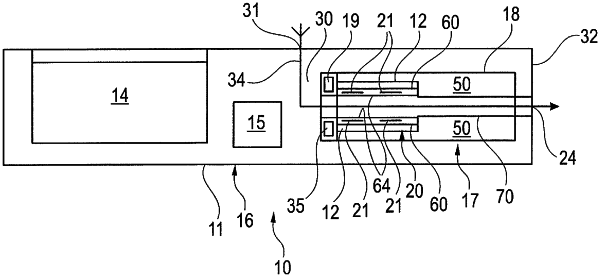| CPC A24F 40/57 (2020.01) [A24F 40/10 (2020.01); A24F 40/53 (2020.01); G05D 23/2401 (2013.01)] | 14 Claims |

|
1. A method for temperature control of a vaporizer for an inhaler, the method comprising:
providing a vaporizer for an inhaler,
wherein the vaporizer comprises:
a heating element,
wherein the heating element is an electric resistance heating element; and
an electronically controlled switching element,
wherein a current flow through the heating element can be switched on and off with the switching element;
measuring a voltage applied to the heating element;
measuring the current flow through the heating element;
determining a resistance of the heating element from the measured voltage and the measured current; and
controlling a temperature of the heating element by controlled switching off of the switching element so that the current flow through the heating element is interrupted when the determined resistance:
exceeds a first critical threshold R_co; or
falls below the first critical threshold R_co,
wherein the resistance of the heating element is determined in a time-resolved manner R(t),
wherein a time derivative dR(t)/dt of the resistance of the heating element is determined, and
wherein, if the heating rate dR(t)/dt of the resistance of the heating element is greater than a predetermined value, a presence of a large vapor bubble covering significant portions of a heater surface is concluded.
|